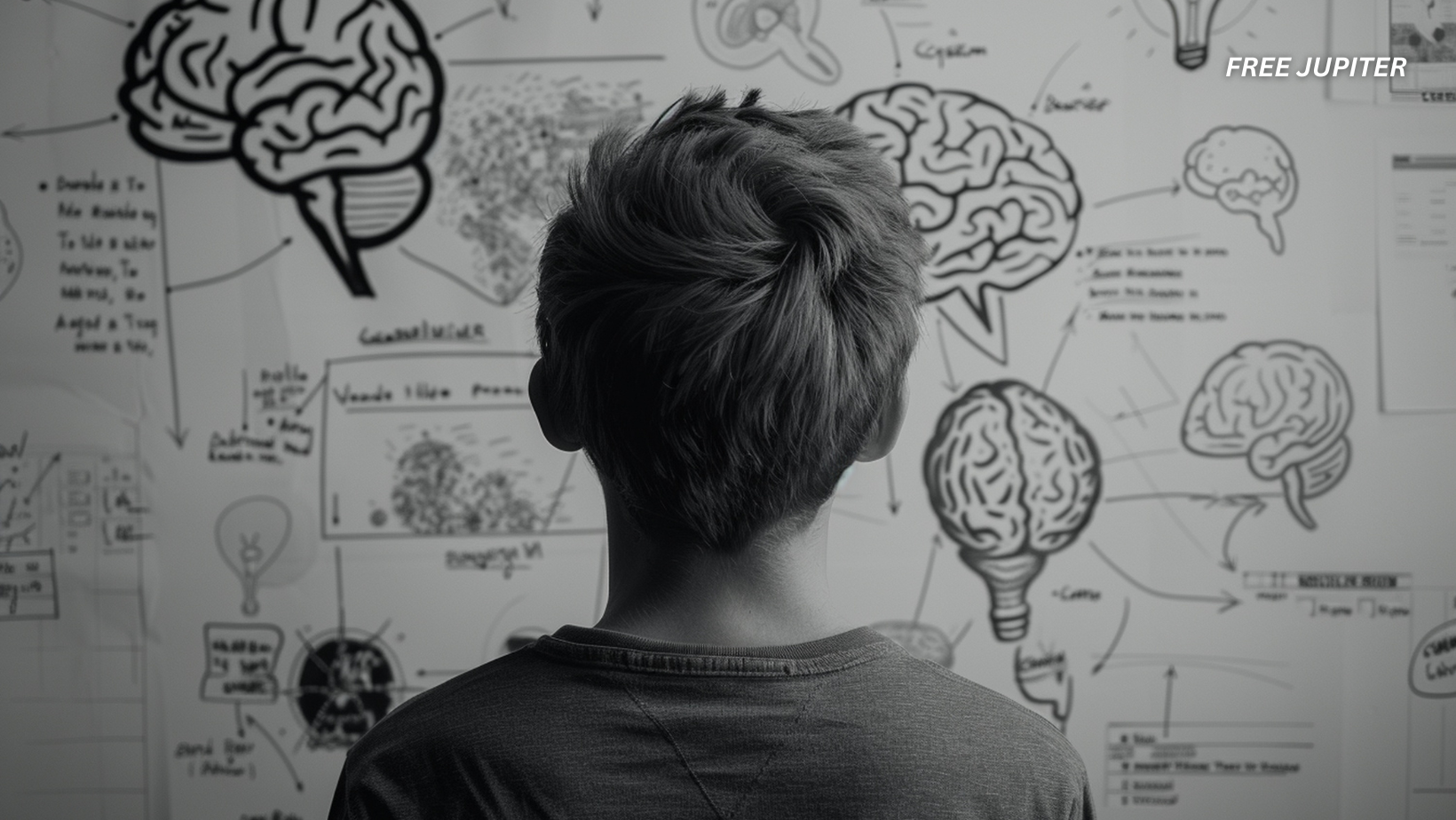Friendly Note: FreeJupiter.com shares general info for curious minds 🌟 Please fact-check all claims—and always check health matters with a professional 💙
Have you ever found yourself lost in thought while everyone else seems tuned into the present moment? Maybe you’re sitting quietly in a coffee shop, while your brain suddenly dives into a spiral of “what ifs,” daydreams, or abstract ideas that no one else seems to be pondering.
You might even wonder: Is there something wrong with me? Why does your mind always seem to wander off the map while others are content sticking to well-worn paths?
Don’t worry—this isn’t a flaw. In fact, it could be a clue that your mind is wired for complex thinking. And that’s not just a fancy label. Complex thinkers tend to process the world in layered, intricate ways. They see what others miss, imagine what hasn’t been created yet, and ask questions that don’t always have simple answers.
Let’s break down what that really means—and how to tell if you’re one of them.
What Is Complex Thinking, Really?
At its core, complex thinking is about depth. It’s a style of mental processing that goes beyond surface-level reactions or binary choices. People who think this way tend to enjoy abstract thought, consider multiple perspectives at once, and play with possibilities that most people might brush off as unrealistic or unimportant.
It doesn’t necessarily mean you’re a genius or a philosopher (though you might be). Instead, it means your mind naturally leans into curiosity, exploration, and imaginative construction. You don’t just think about what is—you’re constantly wondering about what could be.
And how do you know if this applies to you? Below are three key traits that often reveal a mind wired for complexity—plus how to recognize and strengthen them in everyday life.
Read more: Signs Of High Intelligence That Cannot Be Faked
1. You Can Mentally Travel Through Entire Imaginary Worlds
Most people can close their eyes and vaguely picture a beach, a forest, or a familiar street. But if you’re a complex thinker, that mental image doesn’t stop at the basics. Your inner world often becomes as vivid and detailed as the real one.
Imagine you’re sitting still, eyes closed, and suddenly you’re walking through a dense, otherworldly jungle. Strange birds call in the distance. Giant leaves shimmer with dew. The air smells earthy and electric, as though a storm just passed. You feel the crunch of moss beneath your feet and the chill of mist on your skin. You’re not just imagining—you’re experiencing.
This kind of immersive mental journey isn’t a waste of time. In fact, it’s a powerful creative tool. Your brain is doing something remarkable: building whole environments from scratch, layering sensory details, and constructing stories with no script. Over time, this kind of inner exploration can boost your creativity, reduce stress, and help you process thoughts and emotions more clearly.
Real-life example:
Many novelists, filmmakers, and game designers rely on this kind of deep mental imagery to bring their creations to life. But you don’t need to be an artist to benefit from it. Even a simple five-minute daydream can recharge your mind and reset your focus.
Why this matters:
- Strengthens visualization skills
- Enhances emotional intelligence by simulating different environments and scenarios
- Offers a mental escape hatch in times of stress
- Builds the creative muscle for problem-solving
Try this:
Set aside 10 minutes each day to “mentally travel.” Pick a place—real or imagined—and explore it in your mind. Go slow. Linger in the details. The more senses you engage, the more powerful the effect.
2. You Can Clearly Picture a Future You Haven’t Lived Yet
Have you ever caught yourself imagining future moments—not just loosely, but in high-definition clarity? Maybe you see yourself standing on a TEDx stage giving a talk. Or you’re sitting in a sunlit office, finishing a novel. Or perhaps you picture hugging someone you haven’t met yet—someone who feels important.
This isn’t just wishful thinking. This is your mind sketching out a personal blueprint—a mental prototype of your future self. And for complex thinkers, this isn’t a once-in-a-blue-moon activity. It’s often a regular, unconscious habit.
What makes this trait powerful is that it bridges the gap between imagination and action. When you repeatedly envision yourself succeeding—whatever that means for you—you subtly start adjusting your behavior to match the version of yourself you see in those mental snapshots.
Science backs this up.
Psychological research has shown that when people visualize their goals in specific, sensory-rich detail, they’re more likely to achieve them. Why? Because the brain begins to blur the line between imagined experiences and real ones. It starts prepping you emotionally and behaviorally to live that version of your life.
The catch?
If your self-image is weak or cloudy, this process gets harder. That’s why complex thinkers often spend time strengthening their inner visions. They don’t just dream—they rehearse.
Why this matters:
- Builds confidence and motivation
- Helps clarify goals
- Makes abstract dreams feel more real and attainable
- Improves emotional regulation through positive mental rehearsal
Try this:
Each morning or night, take a few minutes to visualize a future version of you. Don’t just see it—feel it. What emotions are present? What are you wearing? Who’s around you? The more real it feels, the more your mind will want to make it happen.
Read more: Damaging Things That People With Low Emotional Intelligence Often Say
3. You’re Not Dependent on Screens to Feel Stimulated
In today’s world, mental stimulation often comes from external sources: videos, tweets, news feeds, and never-ending notifications. But for complex thinkers, stimulation often arises from within. You don’t need the internet to be entertained—you’ve got your imagination, thank you very much.
This trait shows up when you can spend time just observing something simple—a tree, a rock, a piece of fruit—and really explore it with your mind. You imagine its story, its texture, what it would feel like to carve it or draw it or shrink it down to the size of an atom. You’re not just looking—you’re engaging with the object on multiple levels.
This isn’t about being bored. It’s about cultivating presence and mental clarity in a noisy world.
And the benefits?
This kind of slow, deliberate observation can rewire your attention span. It helps you focus longer, think more clearly, and reduce the constant hum of background anxiety that comes from digital overload.
Artists, inventors, and deep thinkers all practice this kind of focus, often without realizing it. They allow their minds to fixate—not obsessively, but curiously—on a single idea or object until something new emerges from it.
Why this matters:
- Improves attention and mindfulness
- Encourages deeper sensory engagement
- Builds patience in a fast-paced world
- Supports mental detox from digital overwhelm
Try this:
Choose one everyday object—something boring, even. A spoon. A sock. A doorknob. Spend five minutes thinking about it in full sensory detail. How would it feel under your fingers? What would it sound like if you dropped it? What’s inside it? Imagine it as a sculpture, a spaceship, or even a creature. Just go with it. The goal isn’t accuracy—it’s depth.
Read more: These “Arrogant” Habits Are Actually Signs of High Intelligence
Final Thoughts: Complex Thinking Is a Gift—If You Learn to Use It
Being a complex thinker can sometimes feel like a curse. You overanalyze, overimagine, and often find yourself lost in thought while the world rushes by. But here’s the truth: this way of thinking is rare, powerful, and full of potential.
You’re not broken. You’re just operating on a different wavelength—one that values depth over speed, exploration over routine, and meaning over mindlessness.
The trick is to recognize this ability, protect it from distractions, and practice using it with intention. These three exercises—mental travel, future visualization, and object immersion—aren’t just “fun brain games.” They’re tools for self-discovery, creativity, emotional balance, and long-term success.
So, the next time someone tells you to “stop overthinking,” smile to yourself. Because what they call overthinking, you know is simply thinking better.










